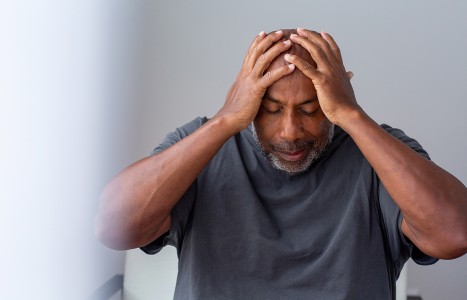Chronic pain afflicts over 20% of the adult population. Sadly, most MDs have essentially no education in treating pain, beyond offering a few toxic medications. Then they tend to steer people with pain away from those health practitioners who are trained. This puts the acupuncture community on the front lines for addressing this epidemic.
Beat the Heat With Ju hua cha!
Ju hua cha (chrysanthemum flower tea/Flos chrysanthemi) commonly is consumed in main-land China almost as much as green tea, and especially during the summer months, due to both the medicinal effects, along with an excellent taste!
Not only is it found in every household, it is commonplace for restaurants to list Ju hua cha on the menu, along with other tea, fruit, cola and alcoholic beverages. It usually is brewed as a single herbal tea and sweetened to taste with Chinese rock sugar or honey. It also is a 1:1 ratio. Hong Ji and I prefer to drink it in this style, without the sugar.
As we are trained in Chinese medicine, this flower is time-honored for its effect on the body to vent exterior pathogenic invasion of "wind heat" of the lung and skin, and quell interior "fire" conditions of the liver and heart. Furthermore, it also is yin-nourishing. Presenting symptoms might include common cold and flu signs such as headache, slight chills/fever, dizziness, swelling, red painful, and/or itchy eyes, blurred vision, irritability and skin rash.
Unlike the U.S., ju hua tea is a big deal in China, to point that it is available at most grocery stores in a few varieties:
- Common ju hua cakes - off-white to yellowish flower buds, loosely pressed into a cake roughly the size of a pancake. This type of cake often is also found rolled up in brown paper. This type tastes bittersweet.
- Loose yellow flower - Gorgeous, bright yellow flowers (dry) about the size of a nickel, pungently sweet-smelling and tasting. The majority are grown in the Hangzhou area of the Zhejiang Province (called Hang Ju). They also are grown in the Huang Shan (Yellow Mountain) area of Anhui province. Specialty function: Strongly clears wind heat invasion from the exterior, such as summer heat invasion.
- Loose white flower - Fluffy white flowers (dry) about the size of a dime, with a small green stem attached. Light and bitter-tasting, antiseptic (bitter) in smell. Specialty function: Quells interior fire and benefits the eyes.
- Wild ju hua - Very small, dark yellow or even brown-colored flowers, the size of a peppercorn, often with relatively large stems attached. It has an extremely bitter taste and smell, especially when the stems are brewed. Some people have a mild allergic reaction to this variety. Specialty function: Clears toxic heat from liver yang rising, resulting in high blood pressure, visual disturbance, carbuncles, furuncles and foot fungus. Topical use for the skin. Ju hua (dry) usually is used in doses of 6-12 grams.
Besides those mentioned earlier, other herbs commonly used in decoctions as internal medicine with chrysanthemum are: sang ye for cough, huang qin for fire, chuan tui and bai ji li for toxic skin eruption, sheng di for yin deficiency, pu gong ying and di ding cao for toxic heat, zhen zhu mu and gou teng for headache/dizziness, gui hua (osmanthus flower) to treat high blood pressure and to soften the arteries, hong hua and chan xiang for arterial blockage with chest pain.
It is used externally as a skin soak/wash for toxic heat conditions. To use in this manner; boil 120 grams dry herb in one quart of water for 10 minutes, let steep for one hour, strain into a bowl, mix in three heaping tablespoons of honey, and apply directly to bare skin on affected areas or onto cloth/gauze bandages.
I actually had great success with this exact treatment methodology [a decoction of 40 grams of ju hua, 40 grams of jin yin hua, and 20 grams of huang lian and 20 grams of dang gui (there was no honey available)] while treating a "severe" case of fire coral-induced toxic rash on a snorkeling trip in Mexico. Skin boils the size of a quarter surrounded 50 percent of the left knee within 20 hours of initial toxin contact, with lots of swelling, fire-like burning pain, and intense mental irritability.
Local Western doctors told the patient to catch the next flight back to America, get into a clean hospital and be prepared to hang out with a drip IV of antibiotics for a few days, or risk leg amputation. Not wanting to "blow off" a wonderful trip gallivanting along the Mayan Riviera for another three weeks, and stocked with 60 pounds of good herbs, the patient stayed.
This remedy was used to soak locally injured areas, and 30-guage needles were used to lance (drain) fluid-filled blisters every hour until the blisters stopped erupting after 12 hours. This formula was taken internally over six doses per day (120 grams). There was far less blistering on the second day
On the third day, the patient went to visit the medical doctor for re-evaluation. Not only was she totally amazed at the recovery of the leg, but she told the patient to continue "gallivanting" after a few more days' rest and more "magic herbs!"


